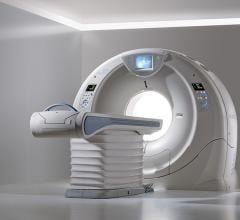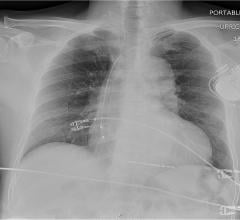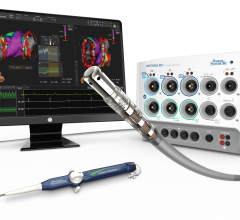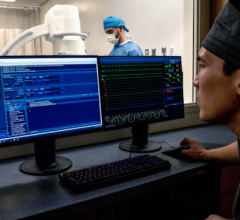
To date, the only definitive treatment for heart failure — an organ transplant — is hampered by both the limited number of organ donors and the potential for the patient's body to reject the new heart. However, findings of a study published in STEM CELLS: Translational Medicine demonstrate the promise in regenerating cardiac tissue using engineered patches made up of a mixture of fibrin and mesenchymal stem cells (MSCs) derived from human umbilical cord blood.
Scott & White Memorial — Temple for the first time implanted a new miniaturized, wireless monitoring sensor to help manage heart failure (HF). Scott & White Memorial is one of six hospitals in Texas and the first hospital in the Baylor Scott & White Health system to offer the device.
Texas Children's Hospital successfully separated Knatalye Hope and Adeline Faith Mata in late February, completing one of the most complex conjoined twins separations ever. The procedure took months of planning, and Toshiba's Aquilion ONE CT system played a crucial role in determining the feasibility of separating the twins and producing images that helped radiologists build detailed 3-D models of the organs.
Providing exceptional cardiovascular care for patients to achieve the best possible outcomes is the number one goal for ...
Philips announced the introduction of Lumify, its first app-based ultrasound solution that will extend the reach of ultrasound applications across the health continuum using mobile technology. The technology was unveiled at the Social Media and Critical Care (SMACC) conference, June 23-26, in Chicago.
InspireMD Inc. announced that its CGuard embolic prevention system reported positive results in the PARADIGM study at the EuroPCR conference, May 22 in Paris. The study was lead by principle investigator Prof. Piotr Musialek.
Results from a clinical trial evaluating the Micra transcatheter pacing system (TPS), the world’s smallest pacemaker, were presented at the Heart Rhythm Society’s 36th annual scientific sessions in May. The device was shown to meet its initial safety and performance measures, as 100 percent of the first 140 patients who received it experienced a successful implant procedure. The study was conducted at the Minneapolis Heart Institute Foundation.
Cardiac positron emission tomography (PET) is growing in popularity among cardiologists because it provides the ability ...
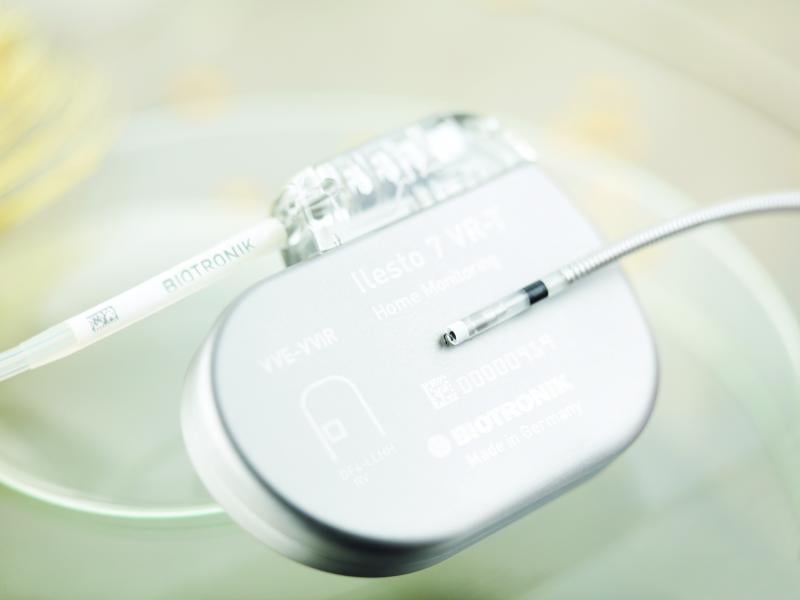
Heart attack patients age 65 and older who have reduced heart function might still benefit from implanted defibrillators, according to a Duke Medicine study published in the Journal of the American Medical Association. But fewer than 1 in 10 eligible patients actually get a defibrillator within a year of their heart attacks, the study found.
Medtronic plc announced the U.S. Food and Drug Administration (FDA) approval and U.S. launch of the recapturable, self-expanding CoreValve Evolut R System. The first-and-only recapturable and repositionable device available in the United States, the Evolut R System is approved for transcatheter aortic valve replacement (TAVR) in severe aortic stenosis patients who are at high or extreme risk for surgery. Untreated, aortic valve stenosis can lead to serious heart problems including heart failure and even death.
The current monitoring of patients with cardiac implantable electronic devices (CIEDs) may be underestimating device problems, according to UC San Francisco researchers. They propose systematic methods to determine accurate causes of sudden death in those with CIEDs such as defibrillators and pacemakers, as well as improved monitoring for device concerns.
When performing radiofrequency (RF) ablation to treat cardiac arrhythmia, medical professionals must balance the safety ...
The Medicines Company announced the approval of cangrelor (Kengreal) by the U.S. Food and Drug Administration (FDA) as an adjunctive therapy to percutaneous coronary intervention (PCI). The novel, intravenous antiplatelet agent is indicated for reducing periprocedural thrombotic events in patients who have not been treated with a P2Y12 inhibitor and are not being given a glycoprotein IIb/IIIa inhibitor (GPI).
The American Society of Echocardiography (ASE) and Ke Labs jointly announced in May an agreement to co-develop and co-market a new cardiac ultrasound software application. The application is designed to ensure quality and consistency of cardiac ultrasound image review — both quantitatively and qualitatively — and inform and educate users on interesting cases, new techniques and other changes. This medical imaging quality management software tool is generally referred to as the “Echocardiography Test and Teach Application,†and it has been designed through the expert guidance of Harvey Feigenbaum, M.D., FASE with the Krannert Institute of Cardiology at Indiana University Health and founder of the ASE.
Epsilon Imaging Inc. announced that several studies were presented at the American Society of Echocardiography (ASE) 2015 conference, June 13-16, on its EchoInsight automated measurement suite for improved analysis and interpretation in echo.
Change Healthcare Cardiology Hemodynamics is an integrated hemodynamic monitoring system for monitoring vital signs and ...
Agfa HealthCare announced that it has received U.S. Food and Drug Administration (FDA) 510(k) clearance for diagnostic viewing with the XERO Viewer. This Full Fidelity View functionality of the viewer uses lossless compression to provide diagnostic quality when images are displayed, by retrieving original-quality renditions of stored digital X-ray (DX), computed tomography (CT), magnetic resonance imaging (MRI), computed radiography (CR) and ultrasound (US) images.
Pie Medical Imaging announced its new release of CAAS MRV, for analysis of the heart to support diagnosis of cardiovascular conditions. This new version contains intuitive and guided analysis workflows, optimized to clinical practice. The workflows guide users through the required steps for functional left and right ventricle, viability and first pass perfusion analysis. The new viability workflow includes, besides analysis of delayed enhanced MR (magnetic resonance) images, also analysis of edema on T2-weighted MR images. The combination of segmented infarcts and edema areas can identify the salvageable areas.
ClearFlow Inc. announced that the U.S. Food & Drug Administration (FDA) has granted expanded Indications for Use of the company's patented PleuraFlow Active Clearance Technology system. The PleuraFlow system is a patented medical device that prevents chest drains from occluding with clot, which can lead to retained blood around the heart and lungs.

 June 24, 2015
June 24, 2015

